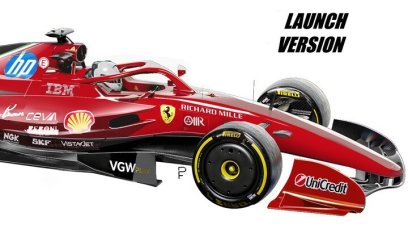Gerhard Berger has compared Romain Grosjean's infamous Bahrain crash to his own high-speed crash at Imola that left the Austrian driver hospitalised with second degree burns after being knocked unconscious. During the 1989 San Marino Grand Prix, Berger speared off at the high-speed Tamburello corner after his front wing dislodged and wedged under his wheels. Hitting the concrete wall, his fuel tank ruptured and caught fire. Berger was knocked unconscious by the impact and was saved by marshals quickly arriving with fire extinguishers. Berger was airlifted to hospital where his injuries were treated, and he made a full recovery. "It was a little bit different," Berger explained to the In the Fastlane podcast. "I think my accident was much harder in a way, because I was much faster and I ran in quite a bad angle. His angle was also bad, mine was into a concrete wall which doesn't move at all. "He had on one side a little bit of luck of having a tyre barrier and and having enough concrete in front, but then he opened up the crash fences and that's one of the most dangerous things you can have happen. "So I wasn't so much shocked about the fire, because the fire you survive a little bit. It takes a bit of time until you're done. "But opening the fences and going through that usually means no chance to survive." Berger admitted to not being the biggest fan of the Halo safety system which saved Grosjean's life, and said that the fire that took hold of his and Grosjean's car is a risk that remains in the sport. "I have to say I wasn't the biggest fan of Halo when it came in. But, in this case, it definitely saved his life. "The fire then was very spectacular but he came out of the fire and and finally everything went well. So it was a spectacular accident. It's part of the sport and, in his case and my case, it turned out quite well." Asked whether such a crash can change how a driver approaches life, Berger explained that he became far less of a risk taker following his accident. "Not so much with the approach to your life, but yes in terms of how you take risks," he said. "After my accident, I thought about it and and, until Imola, I I always liked to take maximum risks and I enjoyed it. I had fun with it. But, after Imola, I said 'well be careful', because sometimes, things end very fast. "Take the risk when it is necessary and don't take the risk when it's not necessary."
Most read







